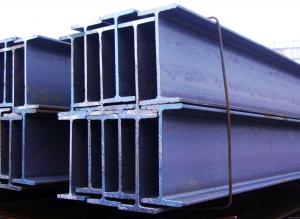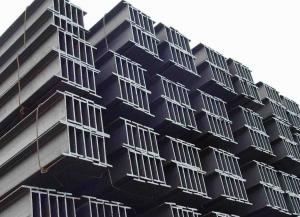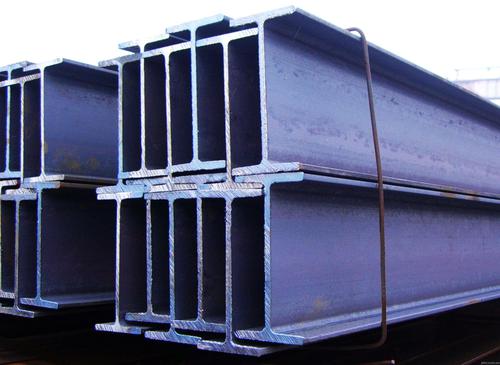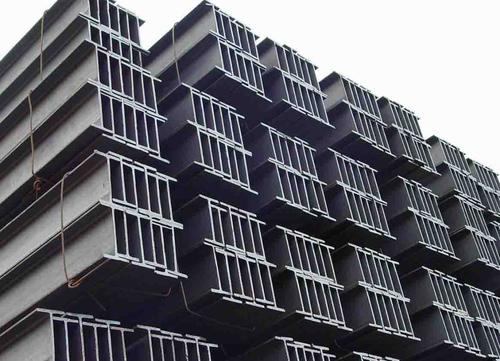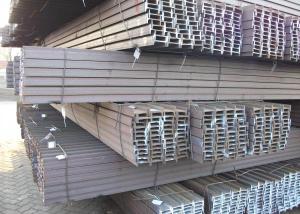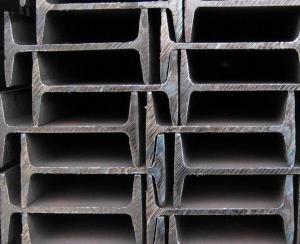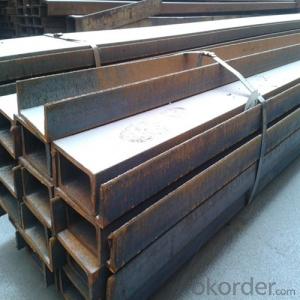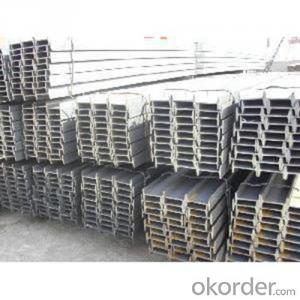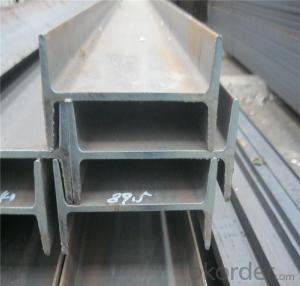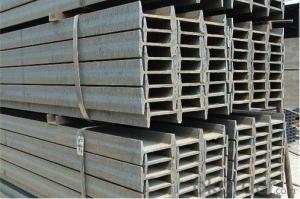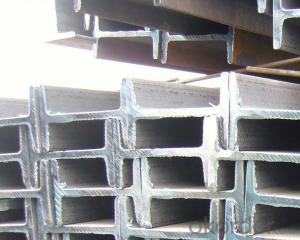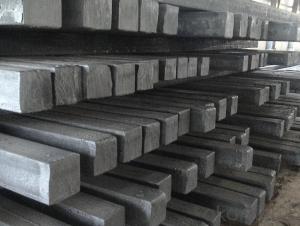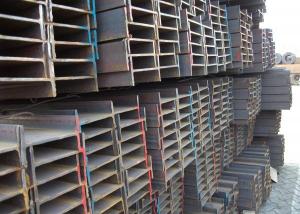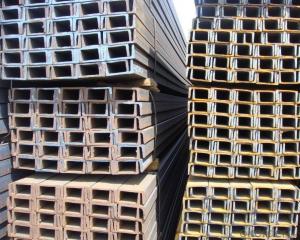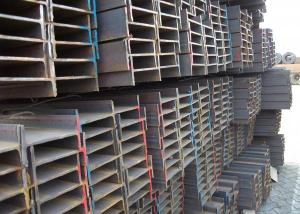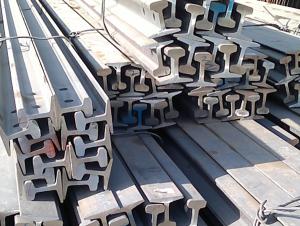IPE Beam 80mm-270mm with Material Grade Q235
- Loading Port:
- Tianjin
- Payment Terms:
- TT OR LC
- Min Order Qty:
- 25 m.t.
- Supply Capability:
- 10000 m.t./month
OKorder Service Pledge
OKorder Financial Service
You Might Also Like
Product Description:
OKorder is offering high quality Hot Rolled Steel I-Beams at great prices with worldwide shipping. Our supplier is a world-class manufacturer of steel, with our products utilized the world over. OKorder annually supplies products to European, North American and Asian markets. We provide quotations within 24 hours of receiving an inquiry and guarantee competitive prices.
Product Applications:
1. Supporting members, most commonly in the house raising industry to strengthen timber bears under houses. Transmission line towers, etc
2. Prefabricated structure
3. Medium scale bridges
4. It is widely used in various building structures and engineering structures such as roof beams, bridges, transmission towers, hoisting machinery and transport machinery, ships, industrial furnaces, reaction tower, container frame and warehouse etc.
Product Advantages:
OKorder's Steel I-Beams are durable, strong, and resist corrosion.
Main Product Features:
· Premium quality
· Prompt delivery & seaworthy packing (30 days after receiving deposit)
· Corrosion resistance
· Can be recycled and reused
· Mill test certification
· Professional Service
· Competitive pricing
Product Specifications:
1. Invoicing on theoretical weight or actual weight as customer request
2. Standard: EN10025, GB Standard, ASTM
3. Grade: Q235B, Q345B, SS400, ASTM A36, S235JR, S275JR
4. Length: 5.8M, 6M, 9M, 12M as following table
5. Sizes: 80mm-270mm
Dimensions(mm) | |||||
h | b | s | t | Mass Kg/m | |
IPE80 | 80 | 46 | 3.80 | 5.20 | 6.00 |
IPE100 | 100 | 55 | 4.10 | 5.70 | 8.10 |
IPE120 | 120 | 64 | 4.80 | 6.30 | 10.40 |
IPE140 | 140 | 73 | 4.70 | 6.90 | 12.90 |
IPE160 | 160 | 82 | 5.00 | 7.40 | 15.80 |
IPE180 | 180 | 91 | 5.30 | 8.00 | 18.80 |
IPE200 | 200 | 100 | 5.60 | 8.50 | 22.40 |
IPE220 | 220 | 110 | 5.90 | 9.20 | 26.20 |
IPE240 | 240 | 120 | 6.20 | 9.80 | 30.70 |
IPE270 | 270 | 135 | 6.60 | 10.20 | 36.10 |
FAQ:
Q1: Why buy Materials & Equipment from OKorder.com?
A1: All products offered byOKorder.com are carefully selected from China's most reliable manufacturing enterprises. Through its ISO certifications, OKorder.com adheres to the highest standards and a commitment to supply chain safety and customer satisfaction.
Q2: How do we guarantee the quality of our products?
A2: We have established an advanced quality management system which conducts strict quality tests at every step, from raw materials to the final product. At the same time, we provide extensive follow-up service assurances as required.
Q3: How soon can we receive the product after purchase?
A3: Within three days of placing an order, we will begin production. The specific shipping date is dependent upon international and government factors, but is typically 7 to 10 workdays.
Images:
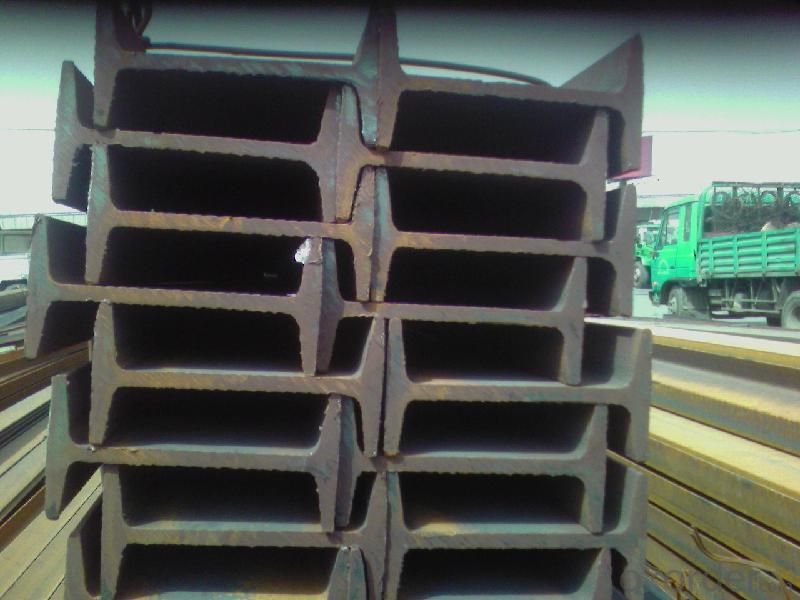
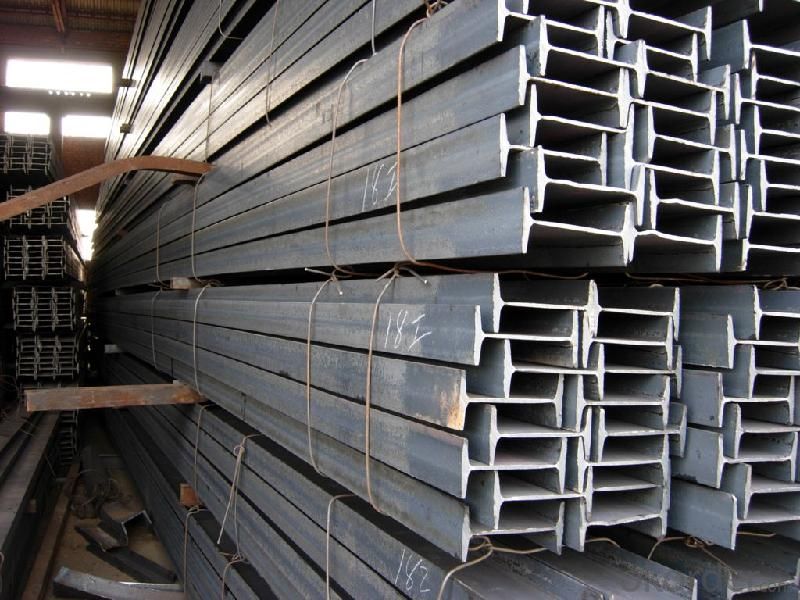
- Q: What are the different sizes and dimensions of steel I-beams?
- The sizes and dimensions of steel I-beams vary depending on the specific requirements and applications. However, common sizes range from 3 inches to 24 inches in height, with flange widths ranging from 2 inches to 10 inches. The length of the beams can vary as well, typically ranging from 20 feet to 60 feet or more. Additionally, the thickness or weight per foot of the beams can vary, providing further options for different structural needs.
- Q: What are the considerations for blast resistance of steel I-beams?
- Some considerations for blast resistance of steel I-beams include the material strength and composition of the steel, the cross-sectional shape and dimensions of the beam, the connection details and welding techniques used, as well as any additional protective measures such as coatings or fireproofing. The ability of the beam to withstand and dissipate the energy from a blast is crucial, so factors like load capacity, ductility, and the overall structural design need to be carefully evaluated. Additionally, the proximity to potential blast sources and the anticipated level of blast loading should also be considered in order to determine the appropriate level of blast resistance required for the steel I-beams.
- Q: Are there any limitations to the length of steel I-beams?
- The length of steel I-beams is subject to certain limitations. These limitations arise from factors such as manufacturing capabilities, transportation logistics, and structural considerations. Manufacturing capabilities are a significant factor in determining the size and length of steel I-beams that can be produced. Steel mills and fabrication facilities have specific equipment and processes that may impose restrictions on the maximum length that can be efficiently and cost-effectively manufactured. Transportation logistics also play a vital role in limiting the length of steel I-beams. The size and weight of longer beams can pose challenges during transportation from the manufacturing facility to the construction site. Road and bridge weight restrictions, transportation infrastructure limitations, and the availability of specialized equipment for handling and transporting long beams can further restrict their length. Structural considerations are another important limitation. Longer steel I-beams have a higher risk of deflection or bending under load. Beyond a certain length, the structural integrity of the beam may be compromised, posing potential safety concerns. Structural engineers and architects must carefully analyze the load-bearing requirements of a project and determine the maximum allowable length for steel I-beams based on factors such as load distribution, beam design, and support systems. In conclusion, while steel I-beams can be manufactured in various lengths, there are limitations imposed by manufacturing capabilities, transportation logistics, and structural considerations. It is crucial to collaborate with industry professionals to ensure that the length of steel I-beams used in construction projects adheres to these limitations while meeting the necessary design standards and safety regulations.
- Q: How do you calculate the load-bearing capacity of a steel I-beam?
- To calculate the load-bearing capacity of a steel I-beam, several factors need to be taken into consideration. Firstly, it is crucial to determine the properties of the specific I-beam being used. This includes knowing the dimensions of the beam such as the height, width, and thickness of the flanges and the web. These dimensions can usually be found in the manufacturer's specifications or can be measured directly. Next, it is necessary to determine the yield strength of the steel used in the I-beam. The yield strength is the maximum stress that the steel can handle before it begins to deform permanently. This value is typically provided by the manufacturer and is expressed in units of force per unit area, such as pounds per square inch (psi) or megapascals (MPa). Once the dimensions and material properties are known, the next step is to calculate the moment of inertia (I) of the I-beam. The moment of inertia is a measure of the beam's resistance to bending and is directly related to its load-bearing capacity. The larger the moment of inertia, the greater the beam's ability to withstand bending forces. The moment of inertia can be calculated using standard formulas based on the geometry of the I-beam. For example, for a symmetric I-beam, the moment of inertia can be calculated as (1/12) * b * h^3, where b is the width of the flange and h is the height of the web. Once the moment of inertia is determined, the load-bearing capacity can be calculated using the formula: Load-bearing capacity = (Yield strength * Moment of inertia) / (Section modulus * Safety factor) The section modulus is another property of the I-beam that measures its resistance to bending. It can be calculated as (1/6) * b * h^2, where b is the width of the flange and h is the height of the web. The safety factor represents a margin of safety and accounts for uncertainties in the calculations or unexpected variations in the load. Common safety factors for steel beams range from 1.5 to 3, depending on the specific application and building codes. By plugging in the values for the yield strength, moment of inertia, section modulus, and safety factor into the formula, the load-bearing capacity of the steel I-beam can be calculated. It is important to note that this calculation provides an estimate and should be verified by a structural engineer to ensure the structural integrity and safety of the building or structure.
- Q: What are the environmental impacts of steel I-beam production?
- The production of steel I-beams has a variety of environmental consequences. To begin with, the extraction of iron ore, which serves as the primary raw material for steel production, results in substantial deforestation and the destruction of habitats. Mining operations can disrupt ecosystems and cause wildlife to be displaced. The process of converting iron ore into steel also leads to the emission of greenhouse gases, notably carbon dioxide (CO2). The high temperatures necessary to extract iron from ore and transform it into steel contribute to the release of CO2, a major contributor to climate change. Moreover, steel production consumes a lot of energy, requiring significant amounts of electricity and fossil fuels, thereby exacerbating greenhouse gas emissions. Water pollution is another significant environmental consequence of steel production. The manufacturing process involves the use of various chemicals, including solvents and acids, which, if not managed properly, can contaminate water sources. Wastewater from steel mills often contains heavy metals and other pollutants, which can have detrimental effects on aquatic ecosystems and human health if not adequately treated. Additionally, the production of steel I-beams generates waste in the form of slag and other by-products. These waste materials can contain harmful substances and must be appropriately disposed of to prevent contamination of soil and water. Transportation also contributes to the environmental impacts of steel I-beam production. The transportation of raw materials, such as iron ore and coal, as well as the shipment of finished steel products, results in air pollution and carbon emissions. Efforts have been made in recent years to mitigate the environmental impacts of steel production. Steel manufacturers have implemented technologies to enhance energy efficiency and reduce emissions. Furthermore, recycling steel is an effective means of minimizing the environmental footprint of steel production, as it reduces the need for extracting raw materials and energy-intensive processes. Overall, while steel I-beams are crucial for construction and infrastructure projects, their production has significant environmental implications. It is essential for the industry to continue implementing sustainable practices and exploring alternative materials and manufacturing processes to minimize these impacts.
- Q: How much is 40 I-beam per ton?
- No. 40 I-beam is the model of ordinary I-beam, divided into a, B, C three kinds, length of a ton are as follows: specification height (mm), leg width (mm), waist thickness (mm), weight (kg/m) per ton length (m)40#a 40014210.5, 67.598, 14.79340#b 40014412.5, 73.878, 13.53640#c 40014614.5, 80.158, 12.475
- Q: How do you calculate the maximum bending moment for a steel I-beam?
- The maximum bending moment for a steel I-beam can be calculated using the formula M = (W * L^2) / 8, where M is the maximum bending moment, W is the total applied load, and L is the span length of the beam.
- Q: Can steel I-beams be used in shopping malls or commercial buildings?
- Yes, steel I-beams can definitely be used in shopping malls or commercial buildings. In fact, they are commonly used in the construction of such structures due to their strength, durability, and versatility. Steel I-beams have excellent load-bearing capabilities, allowing them to support heavy loads and withstand high levels of stress. This makes them ideal for use in large, open spaces like shopping malls or commercial buildings, where there is a need for wide spans and open floor plans. Additionally, steel I-beams are resistant to fire and other natural elements, making them a safe and reliable choice for structural support in these types of buildings.
- Q: What is the maximum deflection allowed for a steel I-beam?
- Industry standards and building codes typically establish the maximum deflection permitted for a steel I-beam. These standards vary depending on the particular application and type of structure under construction. However, as a general rule, steel I-beams often have a maximum deflection limit of L/360 or L/240, where L represents the beam's span length. This ensures that the beam's deflection does not exceed 1/360th or 1/240th of the span length. By enforcing this limit, the beam's structural integrity and stability are preserved, preventing excessive bending or sagging that could compromise the structure's safety and performance. To determine the precise maximum deflection limits for a steel I-beam, it is important to refer to the relevant building codes and standards that apply to the specific project.
- Q: How are steel I-beams protected against corrosion?
- Steel I-beams are protected against corrosion through various methods, such as galvanization, painting, or applying protective coatings. Galvanization involves coating the steel with a layer of zinc, which acts as a sacrificial barrier, preventing corrosion from reaching the steel. Painting involves applying a layer of paint that acts as a barrier against moisture and oxygen, preventing corrosion. Additionally, protective coatings can be applied to steel I-beams, which provide an extra layer of protection against corrosion. These methods help to prolong the lifespan and integrity of steel I-beams in various applications.
Send your message to us
IPE Beam 80mm-270mm with Material Grade Q235
- Loading Port:
- Tianjin
- Payment Terms:
- TT OR LC
- Min Order Qty:
- 25 m.t.
- Supply Capability:
- 10000 m.t./month
OKorder Service Pledge
OKorder Financial Service
Similar products
Hot products
Hot Searches
Related keywords
